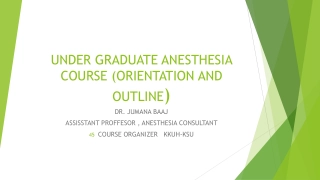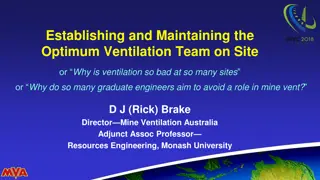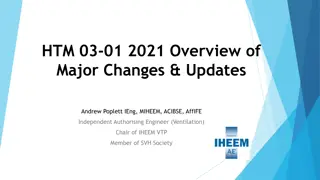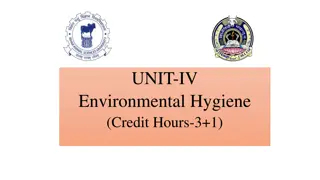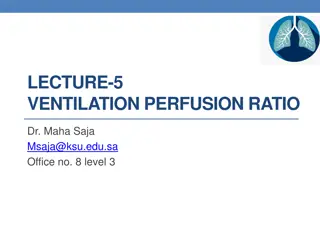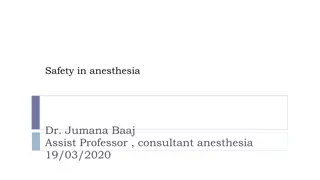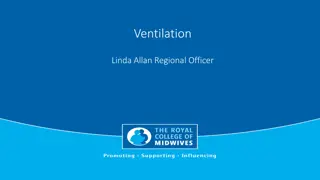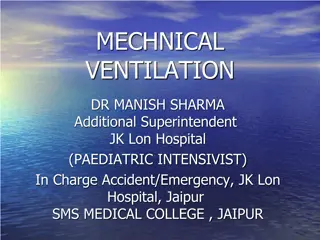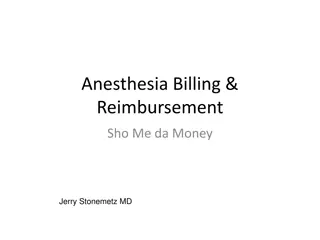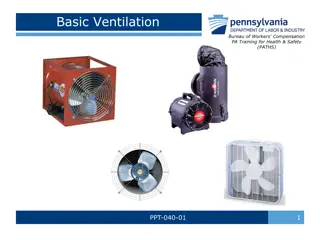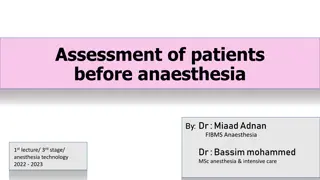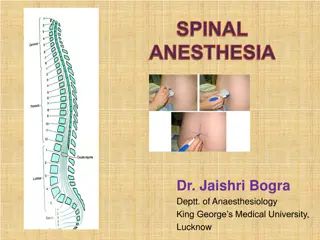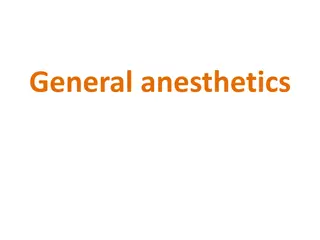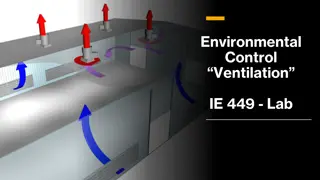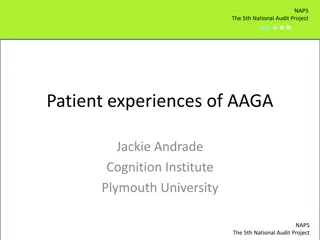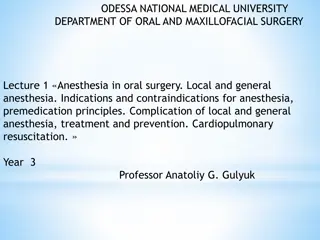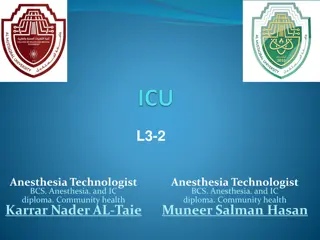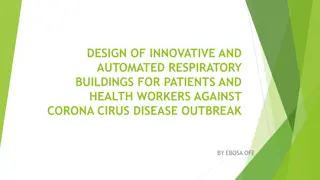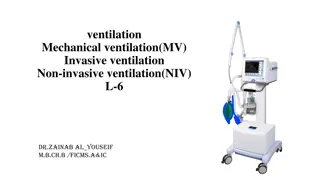Understanding Mechanical Ventilation in Anesthesia Technology
Mechanical ventilation plays a crucial role in assisting patients with breathing difficulties by delivering oxygen and removing carbon dioxide. It involves two primary types: Negative Pressure Ventilation (NPV) and Positive Pressure Ventilation (PPV). NPV helps patients with conditions like chronic obstructive lung disease, while PPV includes Non-Invasive Positive Mechanical Ventilation (NIPMV) and Invasive Positive Mechanical Ventilation (IPMV). Additionally, Continuous Positive Airway Pressure (CPAP) is effective for conditions like obstructive sleep apnea, ARDS, and COPD, including application in COVID-19 patients.
Download Presentation

Please find below an Image/Link to download the presentation.
The content on the website is provided AS IS for your information and personal use only. It may not be sold, licensed, or shared on other websites without obtaining consent from the author. Download presentation by click this link. If you encounter any issues during the download, it is possible that the publisher has removed the file from their server.
E N D
Presentation Transcript
L3 Anesthesia Technologist BCS. Anesthesia. and IC diploma. Community health KarrarNader AL-Taie Anesthesia Technologist BCS. Anesthesia. and IC diploma. Community health Muneer Salman Hasan
Artificial Ventilation Part 1
Artificial Ventilation Mechanical ventilation helps move air into and out of the lungs, with the main goal of helping the delivery of oxygen and removal of carbon dioxide. Mechanical ventilation is used for many reasons, including to protect the airway due to mechanical or neurologic cause, to ensure adequate oxygenation, or to remove excess carbon dioxide from the lungs.
Type of mechanical ventilation There are two primary types of mechanical ventilation: negative pressure ventilation (NPV) positive pressure ventilation (PPV)
negative pressure ventilation (NPV) provides intermittent non-invasive ventilatory assistance for patients with advanced chronic obstructive lung disease. Upper airway obstruction during sleep . And poliomyelitis ventilation
positive pressure ventilation (PPV) Delivery gas to the patient under positive pressure during the inspiratory phase Tow types of PPV 1-Non Invasive positive Mechanical Ventilation ((NIPMV)) 2-Invasive positive Mechanical Ventilation ((IPMV))
Non Invasive positive Mechanical Ventilation NIPMV mechanical support in which positive pressure delivers a mixture of air and oxygen throughout the respiratory tree via a noninvasive interface. delivery of positive pressure ventilation through a noninvasive interface (eg, nasal mask, oronasal mask, or nasal plugs) is applied throughout the respiratory cycle of a spontaneously breathing
Continuous positive airway pressure (CPAP) CPAP is the most effective treatment for moderate to severe obstructive sleep apnea OSA, mild/moderate ARDS and COPD . in which the mild pressure from the CPAP prevents the airway from collapsing or becoming blocked . Recently it has been used in patients with covid - 19
Characterise CPAP Improve oxygenation by increasing FRC and recruiting collapsed alveoli It provides certain positive airway pressure throughout all phases of spontaneous ventilation It is similar to breathing with your head stuck out of a moving car CPAP PEEP an appropriate CPAP pressure is between 5 __ 15 cmH2O, with an average of 10 cmH2O
advantage of CPAP CPAP reduces preload and afterload. Hence it is a very effective for treatment of pulmonary oedema. It keeps your airways open while you sleep so you can receive the oxygen you need for optimal function.
disadvantage of CPAP discomfort and difficulty falling asleep, especially in the beginning. a feeling of claustrophobia or anxiety. nasal congestion. dry mouth. nosebleeds. skin irritation or sores where the mask touches the face. a feeling of being bloated with air.
BIPAP Non invasive form of mechanical ventilation provided by means of nasal mask or nasal prongs or full face mask . The system allows to select tow levels of positive pressure support An inspiratory pressure support level (referred to as IPAP) An expiratory pressure called EPAP (PEEP/CPAP level) pressure support = IPAP EPAP pressure support = 5 __ 10 cmH2O
Advantage of BIPAP BiPAP delivers higher air pressure when you breathe than CPAP delivers the same amount of pressure at all times. So the BiPAP makes it easier to breathe out than the CPAP
disadvantage of BIPAP discomfort and difficulty falling asleep, especially in the beginning. a feeling of claustrophobia or anxiety. nasal congestion. dry mouth. nosebleeds. skin irritation or sores where the mask touches the face. a feeling of being bloated with air.


